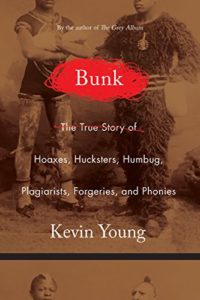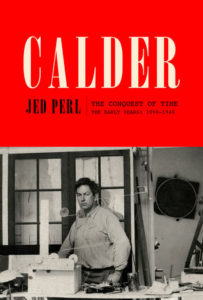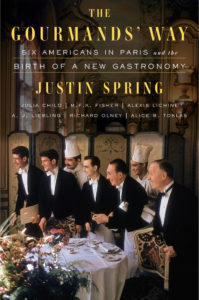
5 Books Making News This Week: "Best of" Season Edition
Kevin Young, Mary Oliver, Fred Moten, and More
It’s “Best of” season, with top 10 lists offered by the New York Times Book Review, Washington Post, Publishers Weekly, Bookforum, Los Angeles Times (the first since 1931) broken into fiction and nonfiction. Rodrigo Fresán wins the Prix Roger Caillois, given out annually since 1991 to both a Latin American author and a French author (Caillois helped bring the work of Borges and Neruda to France). The longlist for the new $35,000 Aspen Words Literary Prize includes Lesley Nneka Arimah’s What It Means When a Man Falls from the Sky, Roxane Gay’s Difficult Women, Viet Thanh Ngyuyen’s The Refugees, Achy Obejas’ The Tower of the Antilles, Shanthi Sekaran’s Lucky Boy, and Jesmyn Ward’s Sing, Unburied, Sing.
More critical attention for Kevin Young’s Bunk, Jed Perl’s massive Calder biography is only the first volume, Maggie Nelson calls the launch of Fred Moten’s Black and Blur an “ecstatic occasion,” Marcel Proust is the model for Justin Spring’s celebration of French cuisine, and Mary Oliver’s “luminous writing provides respite from our crazy world.”

Kevin Young, Bunk
More enthusiastic commentary on Bunk, the new book of cultural criticism from poet Young, the New Yorker poetry editor and director of the New York Public Library’s Schomburg Center.
“By turns brilliant and frustrating, Bunk is nevertheless that rare thing, a trove of fresh and persuasive insights,” notes Laura Miller (Slate).
When a poet turns to history, the expectation is often that the scholarship will be light, perhaps even superficial (think of the literary writers who have tried to turn their misapprehension of quantum physics into a metaphor for human relationships), but the prose will be gorgeous. Bunk, in the first of its many surprises, reverses that formula. Young indulges in a style that tends to obscure his sophisticated arguments, but the book is impeccably, even superhumanly erudite. If the history of the hoax is an ancient and labyrinthine city, then Young has explored every alleyway, gossiped with every fishwife, drunk in every bar in town.
Jonathan Lethem (New York Times Book Review) discusses Young’s subjectivity:
Bunk is a sort of book that comes along rarely: the encompassing survey of some vast realm of human activity, encyclopedic but also unapologetically subjective. These are often the work of some obsessed scholar or autodidact: Think of Elias Canetti’s Crowds and Power, Robert Burton’s The Anatomy of Melancholy, or Gershon Legman’s Rationale of the Dirty Joke. The format is out of step with contemporary nonfiction, much of which divides into memoirs certified by their authors’ griefs and endurances (a subject on which Young has a few things to say), or tidy journalistic forays reflecting the one-chapter-and-outline format of a successful book proposal, in which the author’s thesis is delivered by the end of 40 pages, then padded with anecdotes and examples. Bunk, a panorama, a rumination and a polemic at once, asks more of the reader. It delivers riches in return.
The first half of Bunk, notes Michael Dirda (Washington Post), “serves largely as the warm-up act to Young’s main attraction: the celebrity cheats and liars of our own era. What a lineup! Clifford Irving forges the autobiography of reclusive billionaire Howard Hughes; Jerzy Kosinski messily blurs fiction and nonfiction; Janet Cooke makes up a young heroin addict for ‘Jimmy’s World,’ which earns her, briefly, a Pulitzer Prize; Lance Armstrong repeatedly swears that he never took dope to win the Tour de France; the sexually abused memoirist JT LeRoy turns out to have been a ‘persona,’ created by writer Laura Albert; James Frey temporarily fools the world, and Oprah Winfrey, with his imaginary Grand Guignol past; Stephen Glass courts fame (and exposure) by cranking out magazine stories that are too good, or rather too lurid, to be true. Attempting to justify his own rank betrayals, Jayson Blair later claimed he was just sticking it to his white bosses at the New York Times when he fabricated stories about Washington’s Beltway sniper without even bothering to leave his Brooklyn apartment.”
Melanie McFarland (Salon) concludes:
Barnum’s presence hovers throughout the book like a specter until Bunk arrives at its conclusion—“The Age of Euphemism,” the post-fact world we’re living in now. Days before Trump’s inauguration, he points out in Bunk, the Ringling Bros. and Barnum & Bailey circus shut down forever.
“The elephant in the room,” he writes, “is that what people say they want, and what they are willing to pay for, are often at odds.” Now there’s some cold hard truth in a post-truth age.

Jed Perl, Calder: The Conquest of Time, The Early Years (1898-1940)
The massive first volume of a projected duo covers the life of the American artist through his early forties.
“People looking at Calder’s art are often smiling . . . not a typical reaction to most modern art,” writes Terry Hartle (Christian Science Monitor). “But Calder is often an afterthought in art history. His work is so unique that it’s hard to categorize him. He was regarded as a founding member of the Dadaist movement, an intimate of the Surrealists, but he never regarded himself as part of either group. Piet Mondrian was the inspiration for his move to abstraction, his friend Marcel Duchamp suggested the name ‘mobiles’ for the sculptural works that moved, and another friend, Jan Arp, proposed the name ‘stabiles’ for those that did not. He was particularly close to Jean Miro, Fernand Léger, Jean Hélion, and Isamu Noguchi. He was equally admired in American avant-garde circles . . . ”
Alexander C. Kafka (Washington Post) points out, “The laconic Calder downplayed theory, but Perl treasures it. And that works out strangely well, for who but a bold, incredibly knowledgeable critic such as Perl would have the guts to, in essence, read the mind of a sculptor who preferred bending wire to batting around high-minded jargon?”
Holland Cotter (New York Times Book Review) concludes:
What the book gets absolutely right—thanks in part, actually, to the pacing—is its demonstration of Calder’s staying-in-place-while-flying move from toy-making to art-making, and how profound that move was. Calder’s suspended mobiles—by far his most interesting work—are baby-crib toys that are also experiments in the mechanics of gravitational balance. That they can hang high means everything; it’s what makes them serious. Because height automatically implies depth, and you feel that when you see them. That’s the wow part, and Perl’s book captures it as well as a book can.

Fred Moten, Black and Blur
This is the first volume in the projected consent not to be a single being trilogy by the poet, literary theorist and New York University professor. “The bottom line is there is a powerful and intense and rich tradition of Black visual art that is analogous to the music, just as there is a rich and intense tradition of black movement, that has its own relation to what some scholars more narrowly define as dance,” Moten tells the Brooklyn Rail’s Jarrett Earnest. Twitter runs passages re: the interview for days: “Hoa Nguyen @peacehearty The shimmer. The blur. The holosensual field. New FRED MOTEN interview with Jarrett Earnest.”
Maggie Nelson (4Columns) is ecstatic:
It feels more vital to me to use this moment to note how Black and Blur produces felt experiences of these alternatives, carves new pathways through art and thought, which, in turn, re-makes and multiplies the possible relations between them. Such a focus admittedly foregoes, at least for the moment, any granular attention to Black and Blur’s specific content . . . But it may shed some light on how and why Moten’s writing has become so crucial to so many in recent years, which links to how and why the publication of Black and Blur feels like nothing less than an ecstatic occasion—both in and of itself, and as a promissory note of more to come. Simply put, Moten is offering up some of the most affecting, most useful, theoretical thinking that exists on the planet today—a true leg out of the rut so much criticism has fallen into of pointing out how a certain phenomenon has both subversive and hegemonic effects (“kinda hegemonic, kinda subversive,” as Eve Kosofsky Sedgwick once put it) that has proven so durable since (at least) Foucault.

Justin Spring, The Gourmands’ Way: Six Americans in Paris and the Birth of a New Gastronomy
Spring writes about six Americans in Paris who fell in love with French cuisine and began the movement to transplant it to the U.S.
“The vastly overused French word gourmet indicates, in its original meaning, a connoisseur, someone who is not only knowledgeable about food but also highly exacting about all issues regarding fine dining,” points out Daniel Isengart (Slate). “A true gourmet is likely to be rather conservative and lack patience for any form of indulgence. The lesser-known term gourmand describes, on the other hand, a person with a somewhat voluptuous appetite and whose pursuit of satisfaction via the pleasures of the table can border on obsession.” Spring’s literary portrait, Isengart adds, “illustrates why Julia Child, M.F.K. Fisher, Alexis Lichine, A.J. Liebling, Richard Olney, and Alice B. Toklas earn the more intriguing moniker [gourmand]. Each of these icons of food writing was self-determined and headstrong individualists in matters of food as well as the way they conducted their compelling, highly diverse lives.”
“As I made my way through its artfully constructed chapters, I kept thinking about the ‘paths’ or ‘ways’ that Proust imagined for his cast of characters and the model he provided for Spring’s celebration of French cuisine,” writes Alice Kaplan (Bookforum). “The Gourmands’ Way is a biography of food writers from vastly different backgrounds—a scrappy war reporter, a modernist icon, a fabulist, an Iowa intellectual, a smooth-talking wine impresario, a domineering all-American. Like the characters in Proust’s Search, they appear and reappear, occasionally meeting one another in their search to capture the genius of French food. Together, Spring’s six central figures fostered a midcentury American consciousness of French food and wine that has not been equaled since.”
Ruth Reichl (New York Times Book Review) concludes:
Writing a group portrait, Spring notes, freed him from “the biographer’s duty of isolating and praising the accomplishments of a single individual.” Indeed. Yet in the end his book leaves you both wistful and hungry. Spring clearly appreciates both fine writing and fine food, and his subjects inhabited a France where the dollar was strong, the food fantastic and good conversation valued. Spring may have removed your rose-colored glasses, but even his unromantic vision leaves you wishing you had been there.

Mary Oliver, Devotions
In 480 pages, the work of a half-century comes at a ripe moment for contemplation.
Ruth Franklin (The New Yorker) writes, Devotions “is unlikely to change the minds of detractors. It’s essentially a greatest-hits compilation. But for her fans—among whom I, unashamedly, count myself—it offers a welcome opportunity to consider her body of work as a whole. Part of the key to Oliver’s appeal is her accessibility: she writes blank verse in a conversational style, with no typographical gimmicks. But an equal part is that she offers her readers a spiritual release that they might not have realized they were looking for. Oliver is an ecstatic poet in the vein of her idols, who include Shelley, Keats, and Whitman. She tends to use nature as a springboard to the sacred, which is the beating heart of her work.
“Oliver suggests that it is precisely because life is fragile and darkened by tragedy that we should celebrate and affirm what is good,” writes Danny Heitman (Christian Science Monitor). “‘If you suddenly and unexpectedly feel joy, don’t hesitate,’ she writes in a prose poem called ‘Don’t Hesitate.’ ‘There are plenty of lives and whole towns destroyed or about to be. We are not wise, and not very often kind. And much can never be redeemed. Still, life has some possibility left.’ One finishes Devotions with the sense that Oliver’s poetry isn’t a denial of our troubled times, but an answer to them.”
Elizabeth Lund (Washington Post) concludes: “No matter where one starts reading, Devotions offers much to love, from Oliver’s exuberant dog poems to selections from the Pulitzer Prize-winning American Primitive, and Dream Work, one of her exceptional collections. Perhaps more important, the luminous writing provides respite from our crazy world and demonstrates how mindfulness can define and transform a life, moment by moment, poem by poem.”
Jane Ciabattari
Jane Ciabattari, author of the short story collection Stealing the Fire, is a former National Book Critics Circle president (and current NBCC vice president/events), and a member of the Writers Grotto. Her reviews, interviews and cultural criticism have appeared in NPR, BBC Culture, the New York Times Book Review, the Guardian, Bookforum, Paris Review, the Washington Post, Boston Globe, and the Los Angeles Times, among other publications.



















